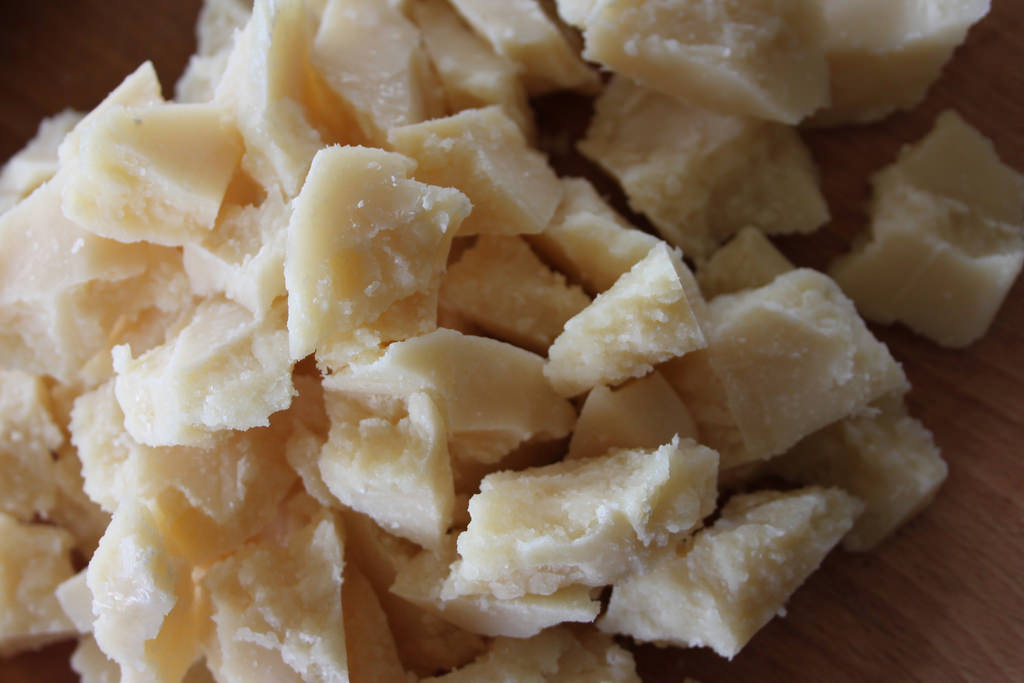First things first – Parm, Parmesan and all other variations with Italian sounding names and Italian looking packagings are definitely not the real deal. We are talking about a traditional production that follows an 800-year old tradition, the King of cheeses that needs time, care and expertise to reach its final complex and rich flavor. Not a rushed and processed ‘cheese’ to sprinkle or melt over any dish… the game is just not on. Our topic of interest is the difference between Parmigiano Reggiano and Grana Padano – two Italian cheeses that share a number of characteristics and may seem identical but have significant differences that make them two distinct products.

AREA OF PRODUCTION
Parmigiano has a more restricted area of production within the region Emilia Romagna – in the provinces of the cities Parma, Reggio Emilia, Bologna and Modena. It is a little like champagne – it can only be made in a very specific area.
Grana, on the other hand still has a designated area of production but a much broader one that includes the regions Lombardia, Piemonte, Trentino, Emilia Romagna and Veneto.
DAILY PRODUCTION
Parmigiano is made every morning with a blend of milk from the night before and the fresh morning milking. This process makes the fat content rise. Grana can be made twice a day, with one batch of milk. It tends to be slightly leaner thus have a less round flavor. Fat content 2.7% Parmigiano 2% Grana.

COW’S DIET
The cows that make the milk for Parmigiano can only eat fresh grass or dry hay from pastures. The ones that make Grana don’t have a regulated diet and eat mainly silage – fermented forage that carries fermentation elements that have a negative effect on the quality of the milk.
RENNET
Parmigiano uses exclusively traditional natural veal stomach, Grana can use vegetal or selected bacterical rennet.
PRESERVATIVES
No preservatives of any kind are allowed in Parmigiano. Grana’s regulation is looser and often contains lysozyme.
AGING
Containing less fat, Grana develops faster. Once it reaches 9 months it is ready to be consumed. Minimum aging for Parmigiano is 12 months, up to 36 – 48 months or more in some unique cases, developing incredible flavors, just like a really good vintage of wine.
PRICE
A strictly controlled process and the time spent sitting on a shelf have a cost. Parmigiano is always a little more expensive.
FLAVOR
Parmigiano is more round, complex and umami-like, Grana is milder and lighter.

Like for everything there is no right or wrong, but there are a number of production standards and details that make Parmigiano a much higher quality and unique product. Parmigiano is a century old tradition, still made following the same knowledge and techniques developing an unbeatable and incredible flavor praised worldwide. Grana is a contemporary response to the need of a cheaper simpler option. Grana is good for cooking with, Parmigiano is the perfect finish to dishes adding a touch of perfection.